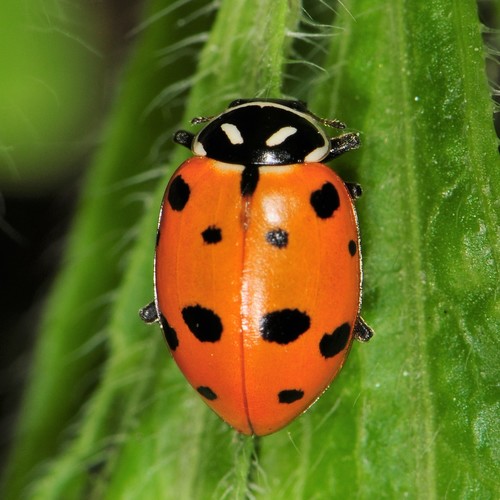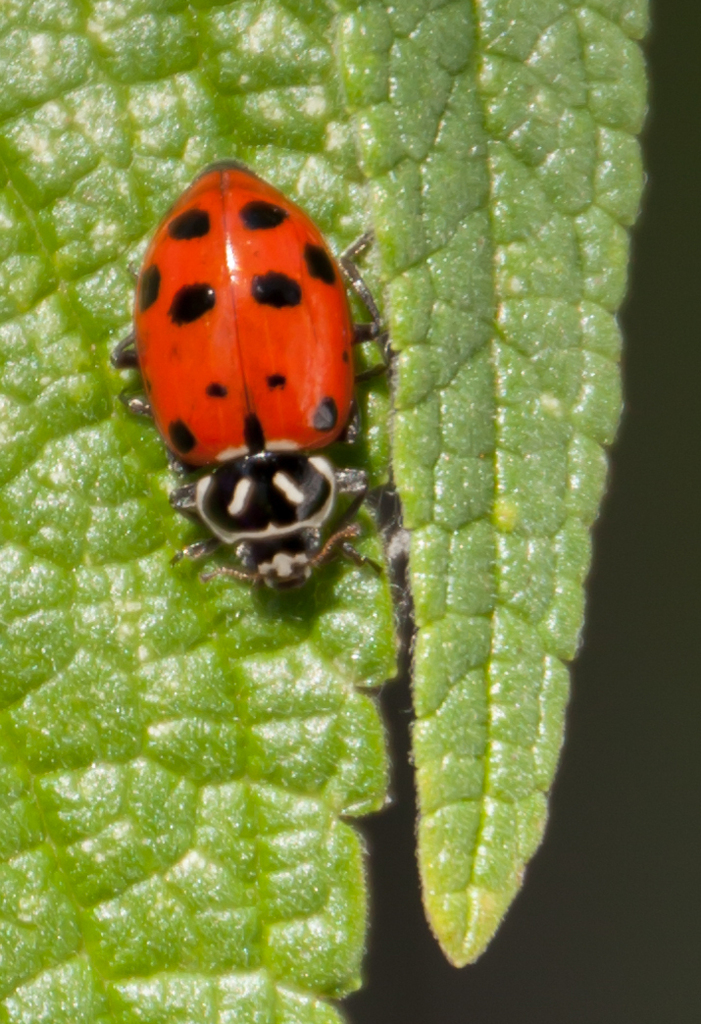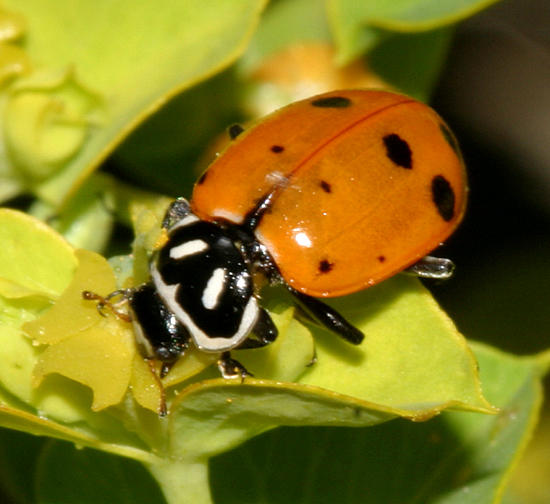
Convergent Lady Beetle © Jason Michael Crockwell
The Convergent Lady Beetle is native to North America. It feeds on aphids and other agricultural pests, making it common in agro-ecosystems. Although they can eat nectar and parts of plants, they will not reproduce unless there are aphids to feed on. Its number of spots can vary, however the maximum number is 13.
Status
Native
Ranked as Secure in British Columbia; Apparently Secure in Alberta, Saskatchewan, Ontario, and New Brunswick; and Vulnerable in Manitoba. The Convergent Lady Beetle has not been ranked in the United States.
Last Seen
2021
Fun Fact
Convergent Lady Beetles will congregate along lake shores, especially in the spring and fall.
Identification
Slightly oblong in shape, 4 to 7 mm in length.
- Elytra are yellowish- or tannish-red in color, with 12 black spots in total. There are usually two white dots at the top of the elytra where they meet, separated by a black patch.
- Pronotum is black, with a white margin on the front (towards the head) and sides, wrapping to the back edges of the pronotum. The white margin typically protrudes into the black patch at the front center of the pronotum. The black patch typically has two symmetrical white lines, that are roughly parallel with the sides of the pronotum.
- Head is black, with a white frontal patch.
- Legs and underside are black.
- Often confused with the Asian Lady Beetle and the Variegated Lady Beetle.
Habitat
Habitat generalist, found everywhere from agricultural crops (wheat, sorghum, alfalfa, vegetables, orchard crops), to meadows, forests, and gardens. Plays a large role in agricultural pest control.
General Range
Southern Canada to South America.
Food
Aphids. Will also eat small insect larvae, scale insects, insect eggs, and mites. Will sometimes consume nectar if prey is scarce or in the fall, before hibernation. Valuable as a pest control in agricultural crops.
Life Cycle
Lays eggs over a three month period, beginning in spring or early summer. The Larval stage lasts between 10 and 30 days, and then Convergent Lady Beetles will pupate for up to 12 days, depending on temperatures. They have one to two generations per year (one in early summer and one in fall), depending on the climate, then hibernate in groups under leaf litter, logs, ground vegetation, or in sheltered areas, occasionally invading people’s homes. They can most easily be found in early summer or in fall, before hibernation.
This is a common American Lady Beetle that is frequently sold for aphid control. It has a slight tolerance for some pesticides, if applied at the appropriate rates.
More Information
You can find more information about Convergent Lady Beetles using the following links:
Vermont Distribution
Visit the iNaturalist Observation Map and Occurrence Records to find out where Convergent Lady Beetles have been seen in Vermont.








